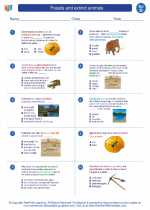Bone Tissue
Bone tissue is a type of connective tissue that makes up the skeletal system of vertebrates. It is a living, dynamic tissue that provides support, protection, and movement for the body.
Composition of Bone Tissue
Bone tissue is composed of cells, fibers, and a mineralized extracellular matrix. The main types of cells found in bone tissue are osteoblasts, osteocytes, and osteoclasts. Osteoblasts are responsible for bone formation, osteocytes are mature bone cells that maintain the bone tissue, and osteoclasts are involved in bone resorption.
The extracellular matrix of bone tissue is primarily made up of collagen fibers and mineral salts, such as calcium and phosphate. This gives bone tissue its strength and hardness.
Types of Bone Tissue
There are two main types of bone tissue: compact bone and spongy (cancellous) bone. Compact bone is dense and forms the outer layer of bones, providing strength and protection. Spongy bone is less dense and found in the inner layer of bones, providing structural support and flexibility.
Functions of Bone Tissue
Bone tissue serves several important functions in the body:
- Support: Bone tissue provides structural support for the body and anchors muscles and organs.
- Protection: It protects vital organs such as the brain, heart, and lungs.
- Movement: Bones, along with muscles and joints, allow for movement and locomotion.
- Mineral storage: Bone tissue stores minerals, such as calcium and phosphorus, which are essential for various physiological processes in the body.
- Blood cell production: Bone tissue houses the bone marrow, where red and white blood cells are produced.
Study Guide
To understand bone tissue, it's important to study the following key concepts:
- Cell types found in bone tissue and their functions
- Composition of the bone extracellular matrix, including collagen and mineral salts
- Differences between compact and spongy bone tissue
- Functions of bone tissue in the body
- Importance of mineral storage and blood cell production in bone tissue
Additionally, it's helpful to learn about common bone disorders, such as osteoporosis and osteogenesis imperfecta, and how they affect bone tissue.
Studying bone tissue can also involve examining bone structure through microscopy, understanding bone remodeling processes, and learning about the role of hormones, such as parathyroid hormone and calcitonin, in bone metabolism.
By mastering these concepts, students can gain a comprehensive understanding of bone tissue and its vital role in the human body.
Good luck with your studies!
.◂Science Worksheets and Study Guides Fourth Grade. Fossils and extinct animals

 Worksheet/Answer key
Worksheet/Answer key
 Worksheet/Answer key
Worksheet/Answer key
 Worksheet/Answer key
Worksheet/Answer key
 Vocabulary/Answer key
Vocabulary/Answer key
 Vocabulary/Answer key
Vocabulary/Answer key
 Vocabulary/Answer key
Vocabulary/Answer key
 Vocabulary/Answer key
Vocabulary/Answer key
